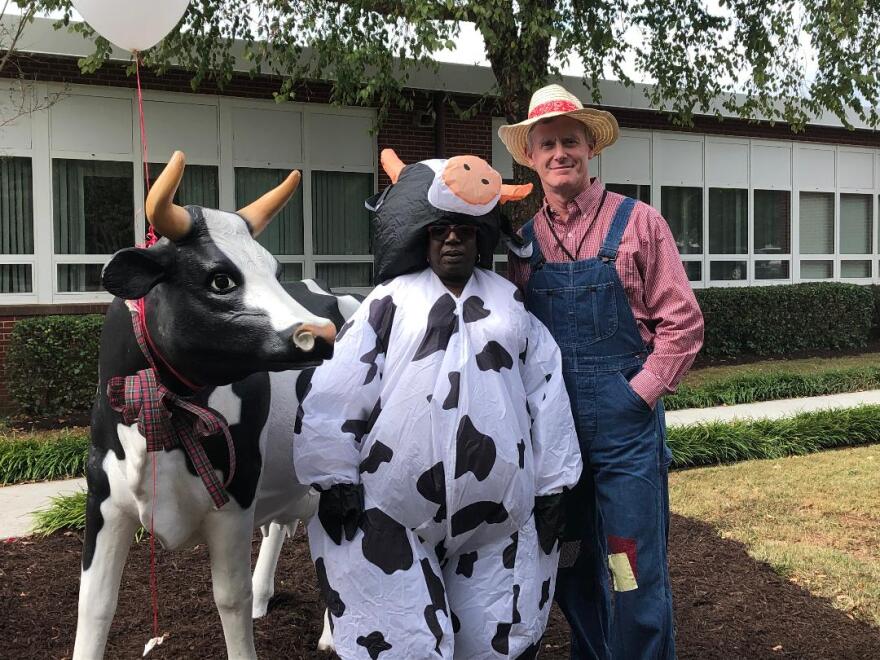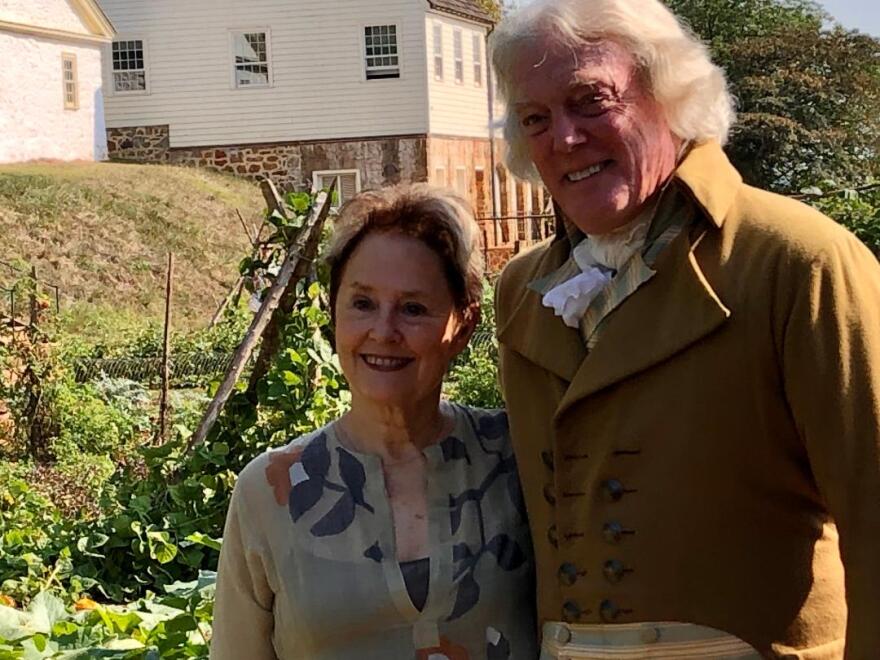It’s October, and consumers can now buy clothes styled for the season by designers in Paris and NewYork. Likewise, food fashions are changing. Sandy Hausman reports on trends for 2019 – where they come from and why.
In restaurants everywhere, chefs must consider ingredients, so changing seasons are one key to culinary trends according to Alice Waters, a Berkley, California chef who founded what’s come to be known as the slow food movement.
“I only eat tomatoes during two, maybe three months a year, she says. "I have them for breakfast lunch and dinner, but when it’s over, it’s over!”
She adds that other trends originate far from farms and gardens.
“It starts with the advertising agency for big companies that want to keep the interest of their customers," Waters explains. "They have to change all the time.”

At the Monticello Heritage Harvest Festival she told a crowd of foodies that the best tastes come from local, organic farms – a view shared by Charlottesville’s Ian Redshaw. He and other chefs also play a role in launching new food trends.
“My job as a chef is to take the best quality ingredients I can find, and that means finding the best quality farmers that I can find, and then taking those ingredients and doing as little as possible to them, just to accentuate them and make them really, really shine," Redshaw says. "Like a butternut squash, if you salt and sugar it for about 30 minutes and then confit it and finish it in oil or butter – a lot of chefs are calling it simple food these days— heritage ingredients that are from farms that people know – that’s probably the biggest thing you’ll find on our menus.”
Recently named one of America’s rising stars by the James Beard Foundation, Redshaw also sees more vegetables on American menus – familiar options and new ones like celtuce, a Chinese long-stem green that tastes like sorrel and a stem reminiscent of rhubarb.
Also old-fashioned animal fats.
“I think that butter is definitely making a big comeback as well as bacon fat and tallow,” Redshaw says.
He predicts peanuts will enjoy a renaissance:
“You see a lot of peanut products coming out, like green pressed peanut oils.”
And foresees more fermented and dried foods.
“Charcuteries, salamis, making hams, dry aging beef and picking and preserving things. People are canning and making their own misos or spreads that are fermented.”
What you won’t see as much, he adds, are dishes that depend on luxury ingredients like foie gras and truffles.
“Chefs are using what’s available around them. There are some truffles that are coming out of West Virginia and Virginia, but they aren’t the same, so I think you’ll start seeing similar ingredients. Something that I’ve been working on is the green black walnuts that are falling, if you cure them in lye you can start making olives out of them.”
Redshaw was joined at Monticello by Haile Thomas, a young food activist whose family came from Jamaica. When her dad was diagnosed with Type II diabetes, she and her mom claim they cured him with a diet high in vegetables and complex carbs.

“Ancient grains are really coming in. I know quinoa had its moment, but like sorghum is also having a moment right now – plant based proteins.”
As a vegan, she’s excited to see brands of plant-based meat substitutes like the Impossible Burger. Alice Waters not so much.
“We don’t need that kind of food that needs preservatives and making it in mass quantities. It’s keeping people in the fast food thinking.”
A change in that thinking could be the most important trend in food fashions, Waters believes America will learn new, healthy eating habits from its kids.
PART TWO:
There’s plenty of science to support a diet high in whole grains, fresh fruits and vegetables. Still, much of America lives on fast, processed foods. Here in Virginia and across the nation efforts are underway to change that.

When Haile Thomas was eight, her dad was diagnosed with Type II diabetes – a condition that put him at risk for cardiovascular disease, blindness and amputations. The doctor said he could control it with medication, but the family was not excited about that option.
“When we looked into the side effects, which were like internal bleeding and death, it didn’t really seem like a solution,” she says.
At the Monticello Heritage Harvest Festival she explained that her parents had come from Jamaica, where meat and white rice are staples.
“The doctor had told him, ‘You know it runs in the family, but what we discovered is that it’s the dishes that run in our family – not necessarily the diseases," she explains. "We’re passing on recipes for illness.”
So Thomas and her mom decided to change the menu.
“Making lettuce cups instead of heavy dishes with rice, and finding ways to switch out protein and just experimenting. I think that was the really fun part of just like trying dragon fruit for the first time and acai bowls and arugula – like for us, we didn’t eat that.”
One year later her dad was no longer diabetic, and Thomas resolved to help others make dietary changes. Today, at 18, she’s the youngest counsellor certified by the Institute for Integrative Nutrition – giving speeches, writing a book and crusading online.
Here in Charlottesville she met the mother of the slow food movement, Alice Waters, who thinks the nation can change course through partnerships between schools and farms – providing the best-tasting fresh ingredients, returning leftovers for compost and – in some cases – learning to grow their own food.
“When they grow it and they cook it, they all eat it," Waters says. "I always say, ‘It’s six weeks to kale.’”

Virginia sees the logic of that. At Perrymont Elementary in Lynchburg students are now drinking icy cold milk from dispensers filled by the Homestead Creamery – just over an hour away. The state’s Secretary of Agriculture and Forestry says growing things here is big business.
“It’s the number one industry. It’s extremely important. It creates about 335,000 jobs.”
And Bettina Ring says schools are a massive market.
“If you look at the amount of milk that they consume, if you look at the food they consume across the state it’s a tremendous market.”

Money and jobs aside, district nutrition director Beth Morris says the pilot partnership between the dairy and two elementary schools achieves three worthy goals.
“Greater acceptance of the milk by the students, a reduced footprint in our landfills and also developing relationships with our local farmers."
The dispensers were purchased with a grant from the Dairy Alliance, and the USDA paid for reusable cups. Then it was up to the kids – who had been drinking from cartons -- to learn one of life’s most important lessons: avoiding spilled milk.

“It took training. Both myself and the principles were amazed at how quickly the children caught on and how little spillage there has been.”
They do still puzzle over one thing: "How do they get chocolate milk out of the cow?" one girl wonders aloud.
But overall, students say they like what’s served with their lunch, and to prove it they performed a special chant rejecting juice and tea in favor of Virginia milk.
“Don’t give me no juice! Don’t give me no tea!" they shout. "Just give me milk – moo moo moo moo – Virginia milk – moo moo moo moo!”


